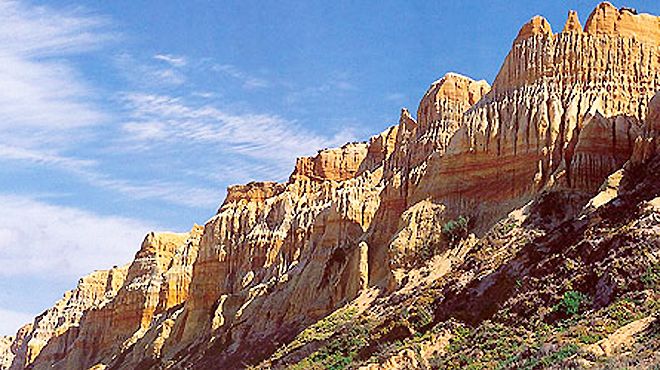Paisagem Protegida da Arriba Fóssil da Costa de Caparica

Protected Areas
The fossil cliff is constituted by a succession of sedimentary rock strata, one of the most important examples of its kind in Western Europe, whose origin dates back to the Pliocene period, around 10 million years ago. At that time, the Sea reached the base of the cliff, but over time it progressively pulled back due to the movements of the tectonic plates of the Earth's crust and the impact of the 1755 earthquake, that originated coastal plains dominated by sand dunes. In order to prevent the sand dunes from advancing inland, thus damaging farming land, in the 18th century King D. João V ordered the Mata dos Medos to be planted - the woodland of "medos" (which normally means fears), that was so named not because it was a dangerous location, but because “médão” or “medo”, also means sand dune.
The woodland, which is dominated by stone pines and mastic-trees, is a botanical reserve, where it is possible to take pleasant walks following the trail signs in the zone.
The unusual shapes of the fossil coast can be seen in their full splendour at dusk, when they acquire golden tones. Over time, erosion has sculpted shapes into the steep cliffs, where several birds of prey such as the round winged eagle and the barn owl build their nests. If you also want a bird’s eye view of the area, ascend to the Belvedere of the Convent of the Capuchos and admire a landscape that covers a vast area from the Serra de Sintra to Cabo Espichel.
The greatest attraction of the Costa de Caparica are the beaches, which are the most popular beaches in the Lisbon region, covering a 10 km stretch. Here, it is possible to practice nautical sports or simply sunbathe. Those looking for more entertainment will find a series of restaurants and bars that provide intense nightlife.




 Explore
Explore 
 Remember and Share
Remember and Share 


